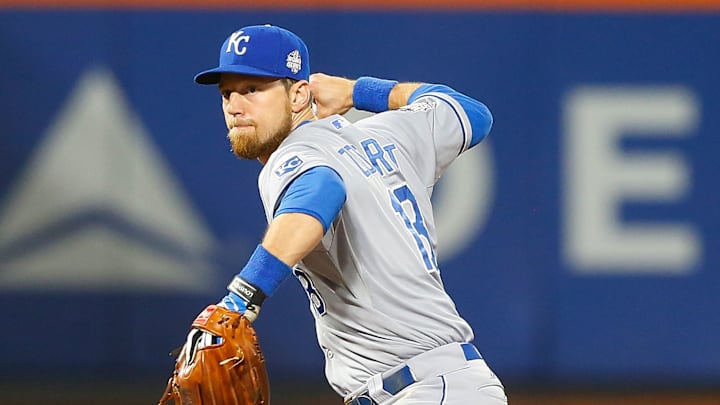2015: Two deadline deals help KC to a World Series title
With a pair of trades separated by less than 48 hours, Moore transformed the defending AL champs from postseason contenders to favorites.
The first, with Cincinnati, landed veteran starter Johnny Cueto, who ended up taking the fading Guthrie's rotation spot.
The price seeme steep. Cueto was eligible for free agency at season’s end and the Reds demanded three highly-touted pitching prospects — Brandon Finnegan, who the year before pitched in both the College World Series and major league World Series, John Lamb, and Cody Reed. Truth be told, Cueto was only ordinary down the stretch, running up just a 4-7 record and 4.76 ERA in 13 starts.
But Cueto proved his worth in the post-season. He made two ALDS starts against Houston, and beat the Mets with a complete game two-hitter in Game 2 of the World Series.
Two days after acquiring Cueto, Moore brought versatile Ben Zobrist to Kansas City from Oakland to play second base, outfield, and everywhere else he was needed.
Like Cueto, Zobrist was to hit free agency at season’s end, so he was purely a rental. Moore surrendered Aaron Brooks and Sean Manaea to get Zobrist, so the trade was not without long-term consequences. Nearly a decade later, Manaea still pitches effectively for the Mets.
Zobrist was a force in his short time with the Royals. He played second, third, all three outfield positions, and DH, making 59 starts down the stretch and hitting .284 with 29 RBI.
He hit .333 against Houston in ALDS, .320 against Toronto in the ALCS, and .261 with two homers and six RBI against the Mets in the World Series.
Zobrist was at his best in the clutch. In KC's 14-inning Game 1 win, he had three hits, including a 14th-inning single that helped set up the winning run. His sixth-inning double in Game 4 led to a run and helped the Royals win 5-3.
